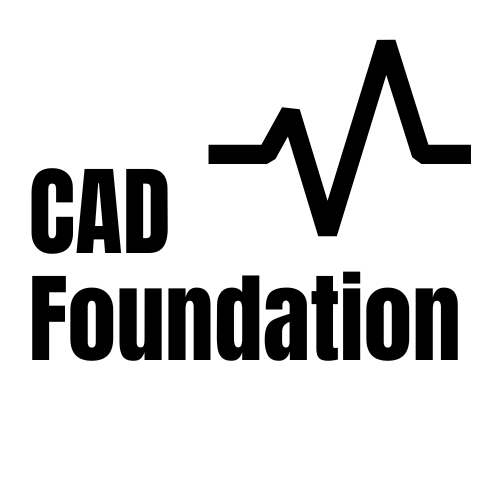Overview
What is Cardiac Arrest? Cardiac arrest is a sudden and often unexpected event where the heart abruptly stops effectively pumping blood throughout the body. This leads to an immediate loss of circulation, which is why it is so critical.
Despite extensive research and investment in the field, the outlook for sudden cardiac arrest remains poor, with a survival rate to hospital discharge typically between 6% and 10%. Most people who experience cardiac arrest sadly do not even reach the hospital. Improving outcomes for these patients requires focused efforts at every stage of their care, with heart-related issues being central to this challenge, from before the event occurs, throughout resuscitation, and into the long term follow up for survivors.
In Details
What is Cardiac Arrest
Cardiac arrest is a complex medical emergency. Here’s a quick look at some key aspects:
- Often caused by pre-existing heart disease.
- Management involves immediate life support, specialized medical care, and ongoing follow up.
- Prevention strategies are crucial, both for individuals at high risk and within hospital settings.
Understanding Cardiac Arrest
Cardiac arrest is defined as the abrupt and often unanticipated cessation of cardiac output (when the heart stops pumping blood effectively). It is also described as the loss of circulation prompting resuscitation with chest compressions, defibrillation, or both. This means the heart has stopped its vital pumping function, leading to a sudden and complete lack of blood flow to the brain and other organs. If not immediately treated, it can be fatal.
What Causes Cardiac Arrest?
Many factors can lead to cardiac arrest:
- Pre existing heart disease is a common underlying factor.
- Coronary artery disease (CAD), which affects the blood vessels supplying the heart, is the most common cardiac cause, accounting for over 80% of cases due to heart related issues, especially in men. Acute myocardial ischemia (a lack of blood flow to the heart muscle) is a prominent contributor.
- Other cardiac causes include structural heart diseases like dilated cardiomyopathy (enlarged heart muscle) or hypertrophic cardiomyopathy (thickened heart muscle), and electrophysiological diseases (conditions affecting the heart’s electrical system) such as Brugada’s syndrome or long QT syndrome. These non-ischemic conditions make up less than 20% of primary cardiac causes.
- The causes can vary with age; for instance, ischemic cardiomyopathy is more common in patients over 35, while a wider range of causes are seen in those under 35.
- In hospital cardiac arrest (IHCA), where the event occurs while a patient is in hospital, cardiac causes are still the most frequent (50-60%), followed by respiratory insufficiency (15-40%).
- Sometimes, despite thorough medical investigation, the cause remains unexplained, partly due to the high mortality before reaching hospital and low autopsy rates.
- Latent causes (hidden or less obvious causes) are also being increasingly recognised. These include inherited arrhythmia syndromes such as catecholaminergic polymorphic ventricular tachycardia (CPVT), short QT syndrome (SQTS), early repolarization syndrome (ERS), and short-coupled ventricular fibrillation (SCVF). These can account for a significant portion of previously “unexplained” cardiac arrests.
Can Cardiac Arrest Be Prevented?
Yes, efforts are made to prevent cardiac arrest:
- Primary prevention aims to identify high-risk individuals (those with known heart disease) before an event occurs. For some, an implantable cardiac defibrillator (ICD), a small device surgically placed in the body to monitor heart rhythm and deliver an electrical shock if needed, can be used. However, effective tools for identifying at-risk individuals in the general population are still needed.
- Subacute prevention involves recognizing “warning symptoms,” such as chest pain or shortness of breath, which may appear days or weeks before a cardiac arrest. This suggests that “sudden death is not so sudden” in all cases, potentially allowing for early intervention.
- In hospitals, prevention includes systems to identify deteriorating patients and the use of rapid response teams. Addressing medication-related issues and managing conditions like sepsis can also help prevent IHCA.
- Familial screening is also important for first-degree relatives of sudden death victims, especially when the event occurs before age 40-45, to identify inherited heart conditions.
How is Cardiac Arrest Managed?
Management of cardiac arrest is divided into “during” and “after” the event:
- During Cardiac Arrest
- The core of immediate treatment involves chest compressions, ventilation (providing breaths), and early defibrillation (an electrical shock to reset the heart’s rhythm) if the heart rhythm is “shockable”.
- For cardiac arrest caused by a heart attack (acute myocardial infarction), an early invasive strategy, such as immediate coronary angiography (a procedure to visualise the heart’s blood vessels) and percutaneous coronary intervention (PCI) (a procedure to open blocked arteries), is often recommended.
- High-quality and uninterrupted chest compressions are crucial. For laypersons, focusing on compression-only CPR (Cardiopulmonary Resuscitation) is often advised.
- Medications like epinephrine are commonly used, though their overall long-term benefit is debated. Amiodarone or lidocaine may be used for shock-resistant heart rhythms.
- Monitoring the quality of CPR using measures like end-tidal carbon dioxide (ETCO2) levels (a measure of carbon dioxide in exhaled breath, reflecting blood flow) is important, with a goal of at least 20 mmHg.
- For very severe cases, Extracorporeal Membrane Oxygenation (ECMO), a life support system that takes over the function of the heart and lungs, may be considered, especially if a reversible cause for the arrest can be identified.
- After Cardiac Arrest (Post-resuscitation Care)
- Once the heart restarts (Return of Spontaneous Circulation ), care focuses on treating the underlying cause, supporting vital organs, and protecting the brain.
- Postresuscitation myocardial dysfunction (PRMD), a severe but temporary weakening of the heart muscle, is common and usually resolves within 48 to 72 hours. It is managed with medications to support heart function (like dobutamine).
- For survivors, secondary prevention is vital to prevent future cardiac events. This includes optimizing treatment for existing heart conditions, using medications like beta-blockers, and often implanting an implantable cardiac defibrillator to prevent recurrence of life-threatening arrhythmias.
- Targeted Temperature Management (TTM), which involves carefully controlling the patient’s body temperature, is a primary strategy to protect the brain, typically maintained between 32°C and 36°C for at least 24 hours.
Other Similar Questions
Cardiac arrest vs heart attack?
A heart attack (acute myocardial infarction) is a common cause of cardiac arrest, but they are not the same event. A heart attack occurs when blood flow to a part of the heart muscle is blocked, while cardiac arrest is when the heart stops pumping blood effectively.
Can cardiac arrest be prevented?
Yes, in many cases, by identifying and managing pre-existing heart conditions, recognizing early warning signs, and implementing quick response systems, particularly in hospital settings.
Resources
Bougouin, W., & Cariou, A. (2017). Cardiac Issues in Cardiac Arrest. Seminars in Neurology, 37(01), 13–18. Geller, B. J., & Abella, B. S. (2018). Evolving Strategies in Cardiac Arrest Management. Cardiology Clinics, 36(1), 73–84. Andersen, L. W., Holmberg, M. J., Berg, K. M., Donnino, M. W., & Granfeldt, A. (2019). In-Hospital Cardiac Arrest: A Review. JAMA, 321(12), 1200. Krahn, A. D., Tfelt-Hansen, J., Tadros, R., Steinberg, C., Semsarian, C., & Han, H.-C. (2022). Latent Causes of Sudden Cardiac Arrest. JACC: Clinical Electrophysiology, 8(6), 806–821.



Leave a Reply